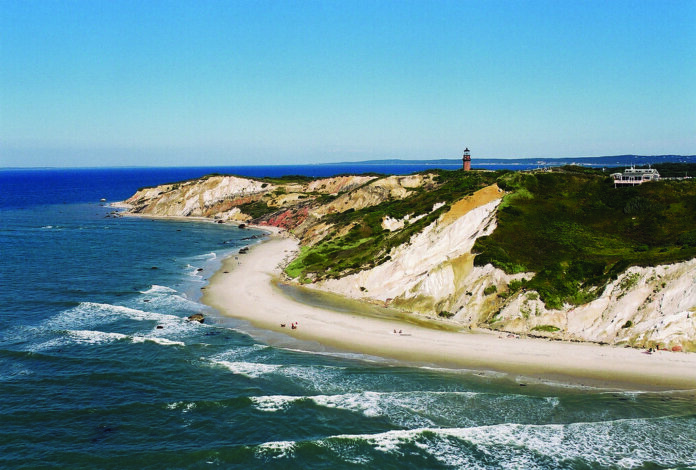In the last five years, the Bureau of Ocean Management (BOEM) has issued 15 active commercial leases for offshore wind development that could support more than 21 GW of generating capacity. Excitement and public awareness has grown as well, with states up and down both the East and West Coasts and on the Great Lakes actively seeking, planning and integrating offshore wind into their carbon-reduction goals.
“We are on the verge of launching the first large-scale wind project in the U.S.,” said Bill White, head of U.S. offshore wind at Avangrid Renewables, during the recent IPF Virtual: Expansion program hosted by the Business Network for Offshore Wind. “We’ve been waiting an awfully long time for this exciting industry with so much potential to become a reality.”
With a record of decision likely to be issued this quarter, Vineyard Wind LLC – a joint venture between Avangrid Renewables and Copenhagen Infrastructure Partners (CIP) – says it is ready to begin onshore construction and transmission work on the project this year.

“In 2022, offshore work will begin relating to the underground cable installation,” White noted. “In 2023, the New Bedford Marine Commerce Terminal, which will be the central staging area for the facility, will have hundreds of unionized workers working around the clock to deploy the project. We will be installing the foundations, the offshore transmission platform and we’ll even commence with the construction of the first set of turbines.”
Vineyard Wind was the first offshore wind project of its scale to go through the series of regulatory processes required to bring a project from its development to construction phase. BOEM applies a four-phase process in the authorization of an offshore wind development: 1) planning and analysis; 2) leasing; 3) site assessment; and 4) construction and operation. The initial talks that led to the inception of Vineyard Wind 1 took place in 2009.
“As the first project, everyone wants to make sure it’s right,” White said. “We’re almost approaching four years in that permitting process. Once we begin to permit these first projects like Vineyard Wind 1, this process needs to get a bit streamlined. We need it to be thorough; we need it to be fully vetted and defensible. There are challenges – there’s no doubt about it.”
Although White has seen firsthand the reality of realizing a commercial-scale offshore wind farm, he remains optimistic about the industry’s growth, its future and its potential to help transition the U.S. to renewable energy.
“It’s quite possible that we are going to have a little bit of a log jam,” he remarked. “There will be so many projects mobilizing so quickly. These are good problems to have; these are problems that are solvable. We are really looking forward to seeing that job creation and those small businesses get an opportunity.”
Photo by Massachusetts Office of Travel & Tourism, licensed under CC BY-ND 2.0





It’s great to see this Vineyard Wind’s experience with Offshore Wind coming to fruition for all of us to see and learn from. The workforce phase on the horizon offers a look into what is needed to educate and give practical on-the-job experiences for offshore wind technicians and other maritime -related occupations for this project; we are happy to partner and assist the New Bedford Marine Commerce Terminal and Port of New Bedford along with Bristol College and additional offshore wind partners on the East Coast.